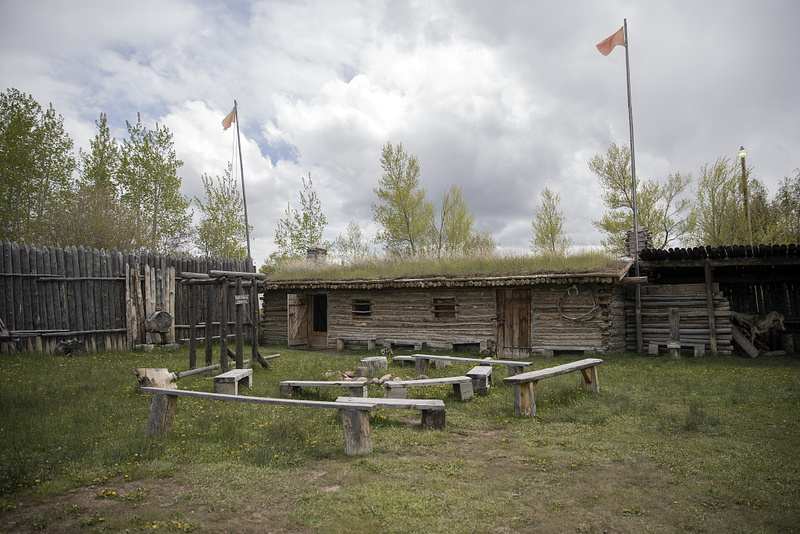Fort Bridger the Crossroads of the West

“‘Fort Bridger’, as it is called, is a small trading-post, established and now occupied by Messrs. Bridger and Vasquez. The buildings are two or three miserable log-cabins, rudely constructed, and bearing but a faint resemblance to habitable houses.” – Edwin Bryant, American frontiersman and guide along the Overland trail
Located just off I-80, thirty miles from Evanston, Wyoming, lies the historic site of Fort Bridger. Fort Bridger has a long history of being involved with the American fur trade, western overland migration, and military involvement against the Mormons and Native Americans. It sits on the historic crossroads of the Oregon/California trail and the Mormon trail, and later the Pony Express Route, the Transcontinental Railroad, and the Lincoln Highway.
Fort Bridger was built by Jim Bridger in 1843. Bridger was a mountain man and frontiersman and heavily involved during the rendezvous fur trade period. He built his trading post close to popular rendezvous areas, as well as near the Oregon/California trail, hoping to gain business from the early emigrants heading towards Oregon and California. The original fort comprised of two log houses, about 40 feet long, with a corral for livestock. The fort also had a blacksmith shop, which was valuable for emigrants on the trail. While it was not as luxurious as Fort Laramie, Fort Bridger was still a welcome sight for travelers used to wandering in the wilderness.
In 1847, the first of the Mormon pioneers passed through the area. Jim Bridger and the Mormons initially maintained a good relationship, but quickly dissipated when the Mormons, feeling that the prices were too inflated at the fort, built their own fort nearby. After a series of raids on the fort, Bridger and his business partner, Louis Vasquez, abandoned the fort and the Mormons moved in. Eventually Bridger sold the fort to the Mormons, although he later disputes that claim. Adding additional fortifications to the fort, such as stone walls, the Mormons continued to use the fort as a supply station for emigrants heading west. However, in 1857, the Mormons abandoned and burned the fort down when rumors that federal troops were marching towards Salt Lake City with orders to bring Brigham Young in line. The US army subsequently occupied the area, deeming it a good proximity for a military presence over the Mormons.
The 1859 military reservation boundaries stretched 20 miles east to west, and 25 miles north to south, creating a buffer between the fort and the Mormon settlements. The army rebuilt the stone structures, and added a large parade ground, barracks, and supply buildings. Like most military forts in the west, Fort Bridger did not have walls that surrounded the entire fort, instead, the buildings faced inward towards each other with the open parade grounds serving as the center of the fort. The US army operated the fort from 1857 to 1890, dealing with disputes between the Mormons and the local Native American tribes. In the early 1860’s, Fort Bridger became the home to the Fort Bridger Indian Agency, which served the Eastern Shoshone, and parts of the mixed Bannock and Shoshone tribes. After the end of the Indian Wars in 1890, the military officially closed and abandoned the fort. Jim Bridger’s dream of a trading post became much more; Fort Bridger became the crossroad in the west, bridging the gap between the east and the west, political disputes, and white settlers and Native Americans.
Images




